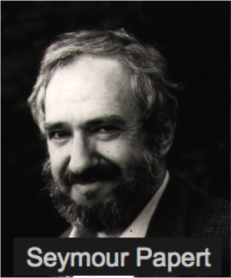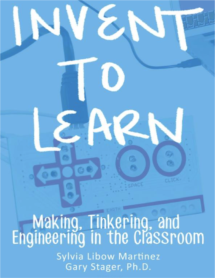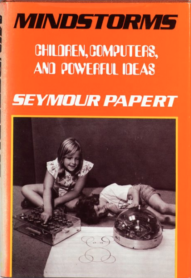
The following is Module 4 from CodeToLearn course in Computational Thinking
So why are we bringing constructionism and Seymour Papert into a course, or discussion, on computational thinking in education?
It is simple, actually. Seymour Papert, as a mathematician, and as a student and colleague of Jean Piaget’s, really was the first person to think deeply about computation, thinking and children ‘being in charge’ and constructing their own meaning.
He articulated that children should construct artefacts—make things. In this way, they are designing, making plans, building, making errors (bugs), finding problems, seeing patterns, solving problems, breaking large projects into smaller pieces (mind-sized bites, Seymour called them), going step by step to create—all the while discussing this with peers because the constructions are happening in a social context. This is the essence of constructionism.
This is the essence of computational thinking. These are skills, and mindsets, that are useful across all aspects of life.
It’s not just about learning to code, but is clearly about coding to learn—as we shall see more deeply in the next module.
Learning Goals
You will:
- Develop an understanding of constructionism and how it is different form constructivism
- Recognize that making isn’t necessarily constructionist
- Learn about a useful pedagogical framework that integrates computational thinking and constructionism
- Further develop your own framework for integrating computational thinking and coding into your classrooms
Watch: Sylvia Martinez on Constructionism


Read or Skim:
- Mindstorms: Children, Computers, and Powerful Ideas PDF by Seymour Papert (Skim or devour! Your choice! It is known to be the most important book in the history of educational computing.)
- ”What is Logo? And Who Needs It?” PDF by the inventor of Logo, Seymour Papert
- Situating Constructionism PDF by Seymour Papert & Idit Harel (Again…skim or devour! Your choice!)
- A Pedagogical Framework for Computational Thinking A useful paper to get you thinking about unplugged, tinkering, making and remixing.
Browse:
- The Daily Papert: Words and Wisdom of Dr. Seymour Papert by Dr. Gary Stager, one of the world’s leading experts and advocates for computer programming, robotics and learning-by-doing in classrooms.
